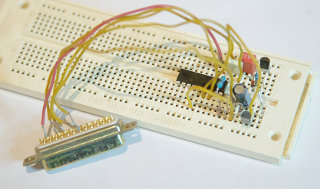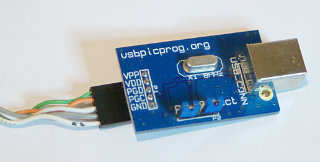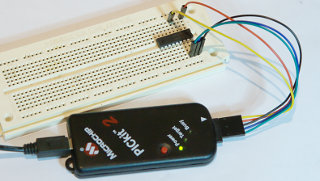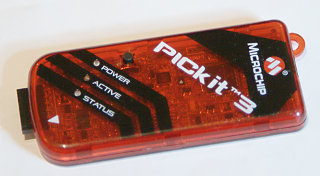
picprog --erase --burn -i mudcontrol.hex -d pic16f876 -p /dev/ttyS1
Unfortunately the JDM programmer was not supposed to work well with a USB serial port adapter, due to voltage level and timing issues.

The host software was sleek and functional, but there were some small issues (probably fixed since then) which left me looking for another solution. One of these days I ought to update its firmware and software and take a look at how it's doing. The project looks a bit quiet, but the list of implemented devices (not all tested, though) is impressive. In addition to the GUI, it also has a command line interface. The magic command might be (I haven't tested this):
usbpicprog -p PIC16F876 --erase --write -f mudcontrol.hex

pk2cmd -PPIC16F876 -Fmudcontrol.hex -MPICkit2 used to work under MPLAB X, although it was not "officially" supported. The latest version does not support it at all—Microchip definitely wants you to invest in the newer (but flakier) PICkit3. I did, but I'm still keeping the PICkit2! I like the pk2cmd command-line utility better, and overall the PICkit2 seems the most reliable of all my programmers.
(Oh, speaking of MPLAB X, how in hell is it even possible that its installed size under /opt/microchip is seventeen fscking gigabytes??? Talk about an overbloated shitpile! I mean, for comparison, the entire /usr directory of my Debian installation takes less than 8 GB total, with all office, graphics, programming, multimedia, 2d CAD, 3d CAD, electronics design, planetarium and other software and their libraries included!!! I mean WTF???)

Other than the inconvenience of having to use it through MPLAB X, the PICkit3 seems nearly as good as the PICkit2. I don't understand the holy wars surrounding the relative merits of the two, but Microchip, please make a proper Linux command-line tool like pk2cmd for PICkit3! (Yes, mdb.sh can be scripted, but it has its problems. See below for my attempt at creating a "pk3cmd" utility.) Some people claim that the PICkit3 requires you to externally power the target device, but that is bull (see below).
By the way, the Microchip DM164135 "ONE PIC" demo kit includes a PICkit3 programmer. Farnell was selling the kit way cheaper than the programmer alone...